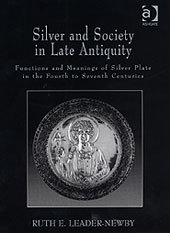Description
Silver and Society in Late Antiquity
Functions and Meanings of Silver Plate in the Fourth to Seventh Centuries
Author: Leader-Newby Ruth E.
Language: English
Subject for Silver and Society in Late Antiquity:
Keywords
David Plates; Late Antique Silver; Kaper Koraon; Sevso Treasure; Thetford Treasure; Late Antique Art; Consular Diptychs; Kaiseraugst Treasure; Late Antique; Hoxne Treasure; Mildenhall Treasure; Nea Paphos; Young Men; Late Antique Emperors; Late Antique Culture; Late Antique Viewer; Central Medallion; Ivory Diptychs; Emperor’s Image; Liturgical Vessels; Liber Pontificalis; Liturgical Silver; Reliquary Caskets; Ars Sacra; Imperial Iconography
Publication date: 01-2004
· 17.4x24.6 cm · Hardback
Approximative price 50.12 €
In Print (Delivery period: 14 days).
Add to cartPublication date: 12-2019
· 17.4x24.6 cm · Paperback
Description
/li>Contents
/li>Biography
/li>
Ruth E. Leader-Newby




